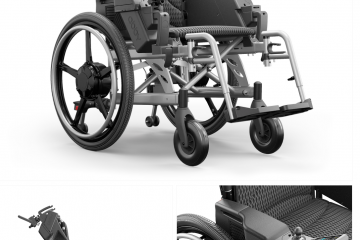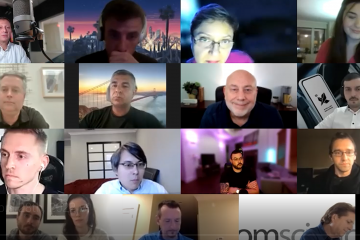Whole Product Concept
The Whole Product Concept introduces an innovative perspective on devising your customer proposition.
Theodore Levitt and Regis McKenna initially put forward this model. However, it received widespread acclaim as a substitute perspective when Geoffrey Moore outlined it in his book “Crossing the Chasm”.
Indeed, there are variances between particular elements in Geoffrey Moore’s perceived version and the original idea, but the central tenet holds firm: The emphasis should be on crafting a comprehensive proposition for your customer, going beyond the basic product.
The Whole Product Concept looks at the customer proposition as a multidimensional scheme rather than a mere supply of a tool furnished with particular functions.
Generic Product
The most profound and fundamental layer starts with what you provide or suggest in terms of a service, digital commodity, or tangible product to your clientele. In this context, a Generic Product could mean your software, web platform, tech gadget, or educational course.
Traditionally, this is the sphere where our primary focus is placed, and we often assume that this is all we need to convey into the customer’s possession.
Expected Product
Understanding the consumer’s perception of what she believes she is obtaining is vital. Customers harbor specific expectations when acquiring products.
They have defined purchase goals and presume that the procured product aligns with the set configuration and functional specification standards at least.
However, in practical scenarios, discrepancies are likely between consumers’ acquisition targets and what the basic or Standard Product delivers. How often have you been left dumbfounded discovering that additional cables or batteries are required once you unwrap a product package? Or noticed that website backup isn’t included in your hosting plan from your service provider?
Augmented Product
One intriguing aspect that can notably elevate satisfaction levels with your product is called the Enhanced Product layer. This layer symbolizes the superior offering that aligns with the customer’s purchasing objectives.
Consider the example of purchasing a car bike rack. The Enhanced Product variant would encompass an anti-theft key-lock system, surplus straps for safe bike transport, and a detailed user manual. Furthermore, all these components are encased within a protective foam layer to keep your valuable bikes safe from potential damage.
Potential Product
The uppermost layer within this product offering hierarchy is the Prospect Product. This reflects the scope for the product’s expansion as more products are introduced into the market, thereby uplifting the customer journey.
Using the car bike rack example again, the Prospect Product could involve morphing the rack into a modular design, allowing for trunk accessibility without the need to remove the rack, ensuring license plate visibility to avoid legal complications, along with bike protectors. These features demonstrate the options for product amplification that far exceeds what the initial Standard Product intended to provide. While it may sound substantial, incorporating a mobile application for your bike rack, establishing a product community via a Facebook group, or arranging local gatherings for buyers to share experiences and visuals could serve in building a community revolving around your product.
How Does This Concept Apply To Startups
In an earlier dialogue surrounding “The Misconceptions About MVP“, we highlighted that numerous startups rely heavily on this term to justify rolling out inferior products to consumers. They frequently fail to recognize that an MVP must be grounded in a theory waiting to be tested, data collection for verifying the theory, and progressive development derived from prior stages’ learnings.
Tight resources often prompt startups to favor this manner as they eagerly seek to authenticate their market-product alignment. This premature market push is fueled by established ideas about how startups must navigate the intricacies of product creation and market proliferation. Naturally, the underlining presumption is that the target consumer base is distinctly identified.
In these situations, adopting a Comprehensive Product Approach can turn out to be an efficient tactic.
If your emerging enterprise is incapable of launching a meticulously examined product that meets all customer purchasing criteria, it may be advisable to comprehend customer anticipations and enhance your Basic Product with additional services.
When the technology doesn’t hit the mark, instituting powerful business processes may enhance and stabilize your product or service offerings.
For a burgeoning business, managing large-scale operations such as a vast software team or deploying business expansion staff may be unattainable. In contrast, you can raise your Basic Product’s quality by offering superior customer service or customized consumer experiences. This strategy could narrow down the distance between the Basic and Anticipated Products, bringing the consumer nearer to achieving their purchasing goals and viewing your provision as a more comprehensive product.
To put it more succinctly, the emphasis should gravitate towards the cumulative customer experience you aspire to deliver. Instead of focusing solely on your developing application or service, bear in mind that your startup encompasses more – it embodies the complete enterprise you’re nurturing.
Frequently, when the product is merely ordinary, customer grievances start flooding in. A common response is – “Oh, this is our trial product” or “this is our MVP and we’re improving our product”. Identifying that customers are indifferent to these technical aspects is crucial. By concentrating on the experience you aim to provide, beyond just your Basic Product, you’ll be better prepared to manage such feedback and stimulate business expansion through improved customer engagement.
Granted, concentrating on more than just the Basic Product might seem like added effort, but it isn’t necessarily so. In fact, this tactic can allow more room for product innovation as you begin to deliver services to customers, testing various notions, and appraising different provisions. Tweaking a process is generally easier than altering something that’s coded or produced as a physical entity.
The Whole Product Concept Importance
The Comprehensive Product Approach offers a promising prospect and a pathway towards a loyal customer base.
Embedding this approach into your business strategy will enable your startup to behave like a genuine business entity, meeting customer purchase goals more promptly, and making a mark for your startup in the industry landscape. This method will foster the uniqueness you require to make your presence felt in an aggressive market. When you succeed in delivering value, consumers are likely to turn into brand promoters, aiding in business growth and render attracting investors for further expansion notably simpler.



0 Comments